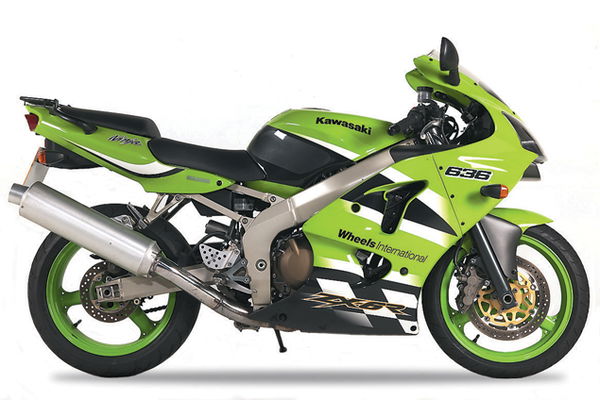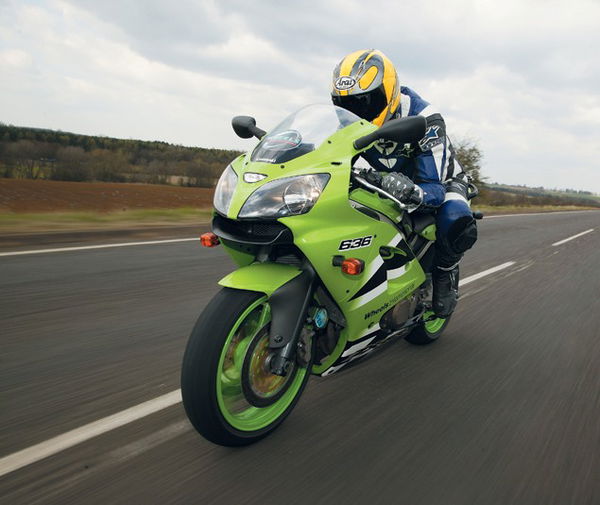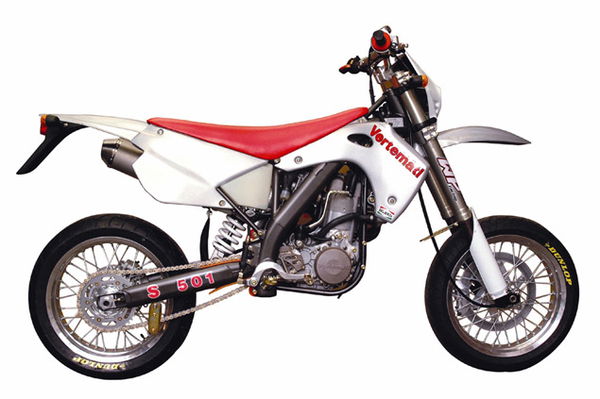First Ride: 2002 Kawasaki ZX-6R 636
Make it bigger and better is the order of pedigree. In 2001 Kawasaki, despite the fact that their bike was probably the oldest on the grid, won the World Supersport Championship - as vindications go, it doesn't get much better than that really!


Cadwell is a perfect test bed for splitting differences between 600s, so I wanted to test the 636 alongside our blindingly quick road test editor Niall Mackenzie, and wrestle it around the painfully tight 2.2 mile circuit. This way we could compare notes (from his level down to mine) get a good impression of the Kawasaki, and how much better (if anything) 36cc's makes over its lower cubed competitors.
"It's the most surprising one for me," says Niall after his first ride of the new Kawasaki, "because I thought it'd be a bit of a dog, and then it went so damn well! Still looks dated, though. You sit on it and notice the same old analogue clock layout (didn't know anyone still used those), and it still has that prehistoric fuel tap that's virtually impossible to get to on the move, but once you get going you forget all that and it feels really good to ride."
And blow me if the Old Trout wasn't right. The 636 did feel easy to flick around Cadwell. We never dropped the forks through the yolks or jacked the rear ride height up to make it steer, which is usually the first thing we do. (See May issue 636 launch). So it isn't that bad out of the crate. After completing a session Niall did come in and stiffened the front preload up by three full turns. "Feels like it is slightly understeering on the standard settings, and it's a touch vague." This made it feel much better on the new revised front forks. As a consequence I never heard anyone mention that it was turning or steering slow after this throughout the day, as everyone usually does.
"One thing for me that 600s lack is midrange,"says Niall. "Apart from the Suzuki, which has got something in the middle. But compared to the old ZX-6R, you could feel a bit more in the midrange on the 636. Nicer in the middle, but that wailing noise the 636 is pure magic, a 600 with some real character. Top-end power is not bad, but it did have some midrange off some of the slower corners that the others just did not have - they were just dead unless you kept them revving."
It has to be said that the fuel-injected GSX-R is the only bike here that can match the 636 for midrange. Kawasaki may be cheating, but that extra 36cc is just enough to give them a gentle midrange hike that the others can't match. Example: at 8,000rpm the 636 is making 68bhp and 6.2kg/m of torque. At the same rpm, Yamaha's R6 is making 60bhp and 5.5kg/m of torque. The Kawasaki also goes on to make the maximum horsepower of all the bikes here, 106bhp at 12,600rpm, so although 36cc isn't very much it's enough to give them an edge. And any edge in the tightly-fought 600 supersport class is a good thing to have.
"If the other manufacturers did start boring out their models to 640cc or whatever they would overtake the Kawasaki for sure," reckons Niall. "I wasn't a big fan of the old 600 Kawasaki but I really like that 636, so it must be the engine that's made the difference."
We left all the bikes on their stock tyres, which were Dunlop D207s on the 636, and let the pressures down to 32psi front and 34psi rear from the road settings to allow the tyres to move around a little and give more grip at the track. It did make the bikes a little more wobbly on the road, so it's only something that you want to be doing for the circuit. Don't get any clever ideas about it giving you loads more grip down your favourite stretch of B-road, or anything, because it just doesn't work like that. Either way, the 636 was a better handler than the CBR (more fun) and R6 (more forgiving) and was right up there with the sports-only GSX-R600 in terms of outright handling on the road and track.
I went for another blast to see if everything made pure sense after what Niall had said. Considering the noise it makes, the 636 doesn't rip your arms out of their sockets like you might expect it to. But it does feel noticeably healthier and fitter than last year's model, and it's as easy to ride (and as comfortable) as the CBR600. Brakes-wise, I don't know why they never just fitted the highly-effective four-piston calipers like on the ZX-9R, as they would be even lighter on the steering (less unsprung weight) and probably feel as strong. The six-pots work well enough but still feel a little vague. That's fashion for you.
The 6R always gets a bit of a mauling because it is - undeniably - somewhat old-fashioned. But with this 36cc boost and some suspension tweaking, it has the most power of this bunch, comfort to match the Honda CBR, and track-manners that are almost the equal of the GSX-R600. What it hasn't got is space-age styling or a racetrack look. If you can live without those, however, the new ZX-6R has got it all.
Conclusion
If only it had modern styling and did away with horrible old things like analogue clocks and a highly-irritating fuel tap, chances are it would be Number One. I got off it after the GSX-R600 at Cadwell and it was right up there with the Suzuki for track manners, yet 10 minutes later you could be riding on the road at whatever pace you liked, in control and in total comfort. The 36cc extra it carries over the others do give it a slight midrange advantage, and the rasp the engine makes gives it a real character. If only they made it look as good as it rides and slung some 21st Century technology onto it...
Kawsaki ZX-6R 636 Specs
Type: Supersports
Production date: 2002
Price new: £6695
Engine capacity: 636cc
Power: 106bhp @ 12,700rpm
Torque: 48lb/ft @ 10,100rpm
Weight: 172kg
Seat height: 820mm
Top speed: 158mph












